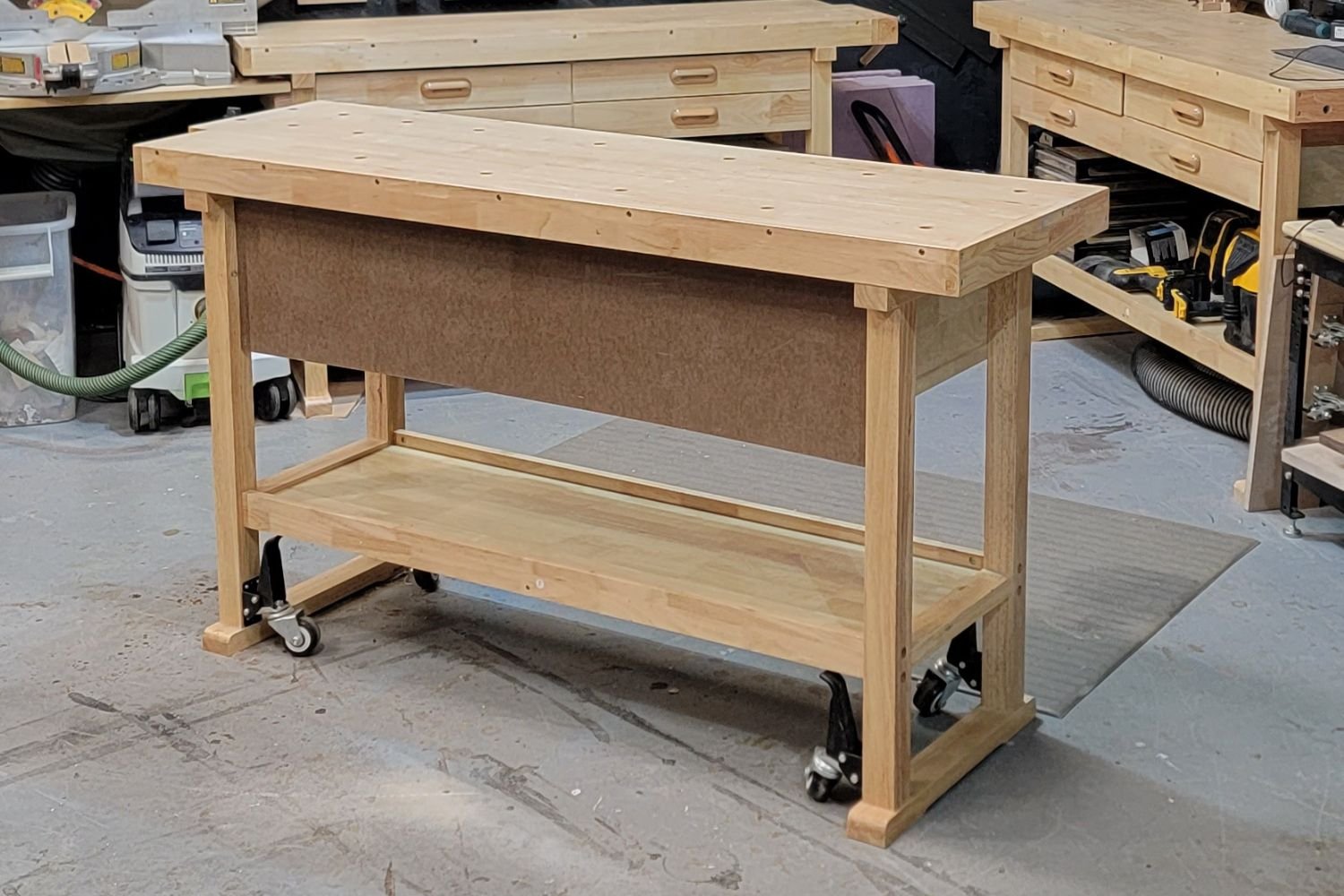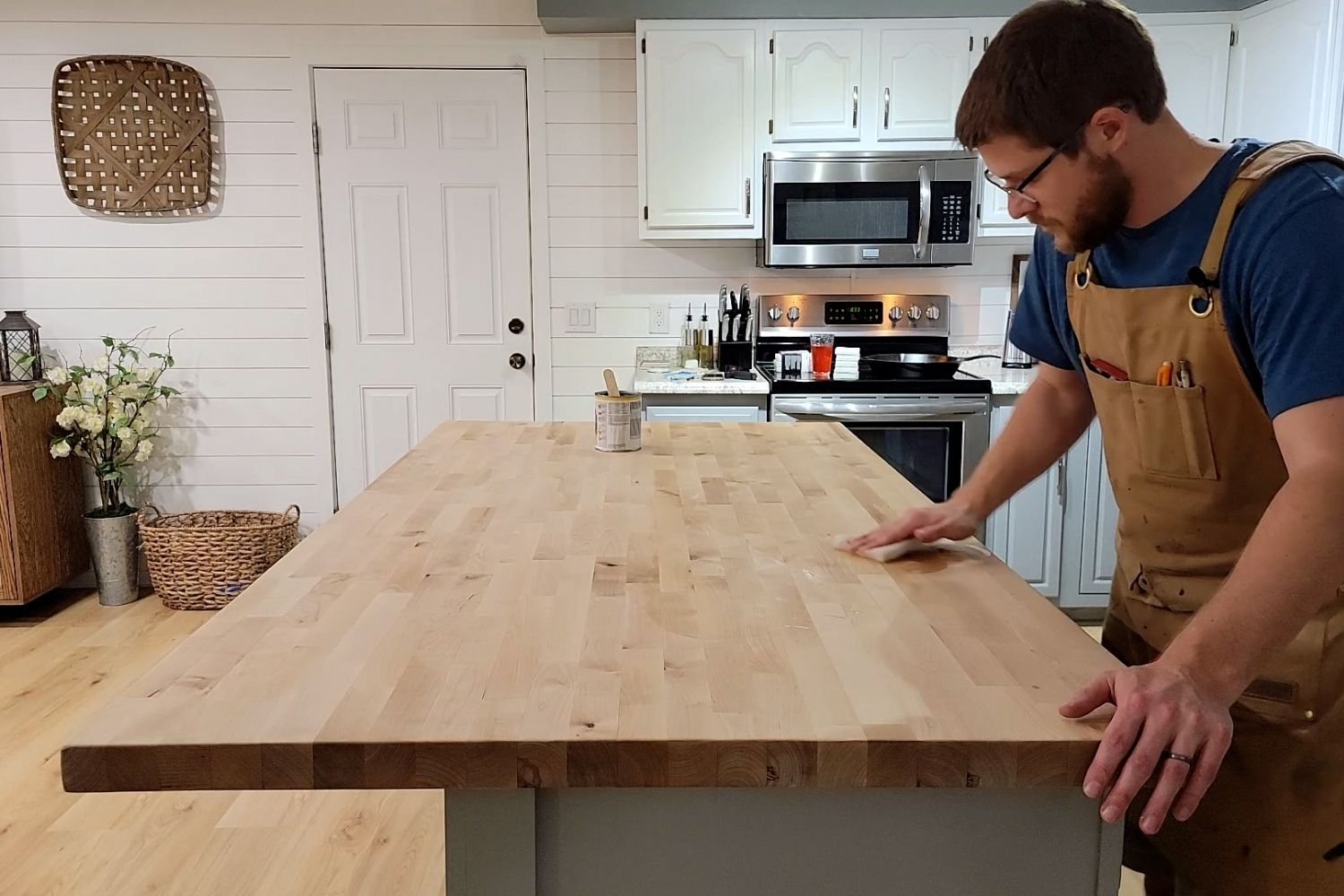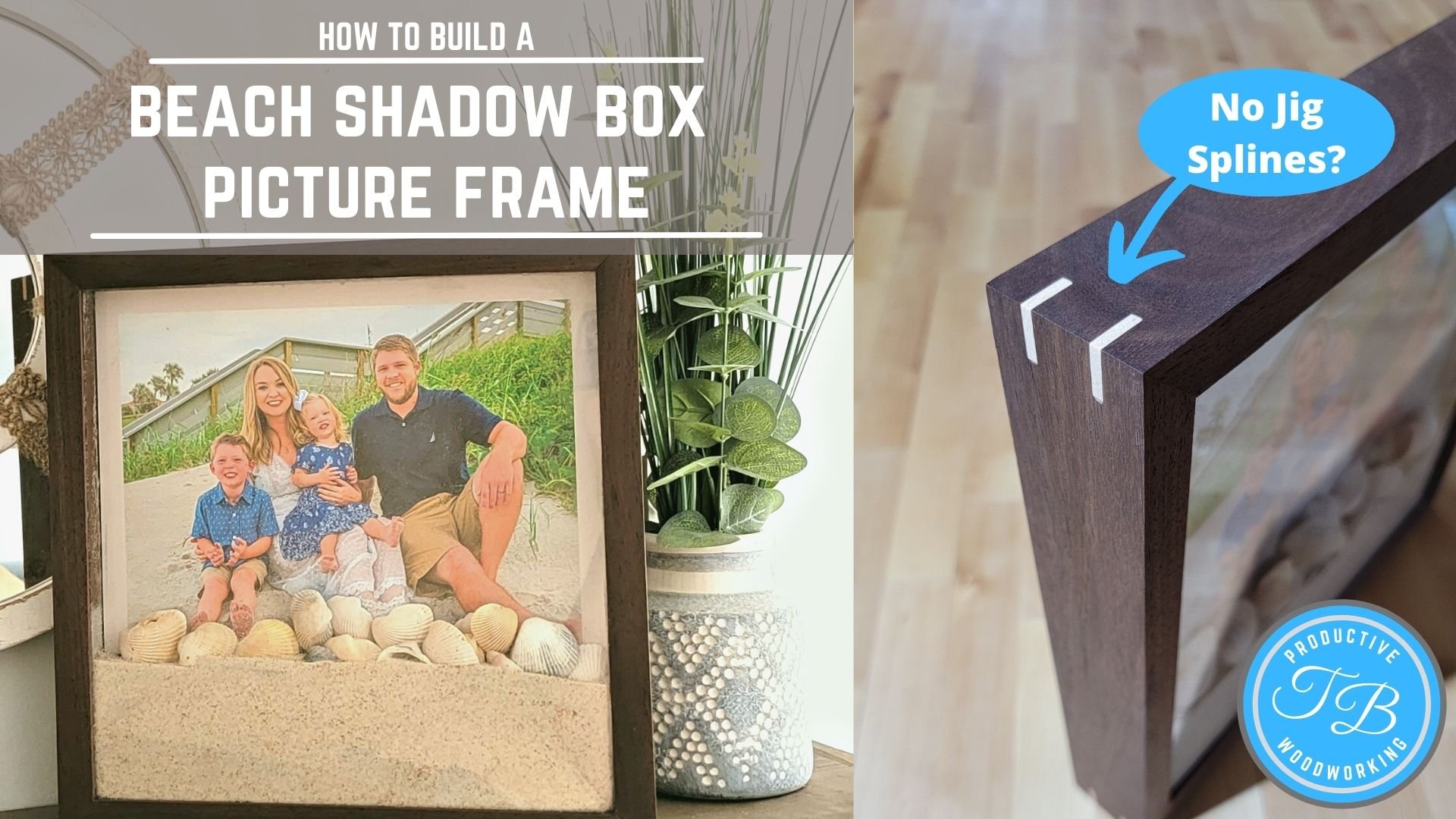The Best Workbench Height (Complete Woodworking Guide)
When it comes to finding the best workbench height for woodworking, it depends on the different type of work you will be performing. There is no one perfect height for all woodworkers, so it's essential to find the ideal workbench height for the kind of work you will be doing.
The best workbench height for woodworking is 30-39 inches tall with the average workbench height ranging from 34-36" inches. However, the perfect woodworking bench is tailored to your personal physical stature and your type of woodworking. To measure your custom workbench height; stand relaxed with your arms at your side and measure the distance from the floor to the first knuckle of your thumb.
There are a lot of different opinions on what constitutes the "ideal" height for woodworking, and it can be hard to decide which one to follow. In this article, we outline the three main types of workbench heights, a way to calculate a personalized height and help you find which is the best for you.
Calculating A Custom Workbench Height
If you're looking for a workbench that's the perfect height and tall enough to comfortably handle your woodworking projects, you may want to buy or build a custom workbench tailored to you. The way to find your perfect workbench height or a good starting point to measure from is quite easy. To measure your custom workbench height; stand relaxed with your arms at your side and measure the distance from the floor to the first knuckle of your thumb. This will give you the perfect workbench height to match your physical stature, you may need to adjust the height depending on the projects you work on and your personal preference. If you want to further customize the workbench height to your style of woodworking you can increase or decrease the height by 2 inches for either power tool or hand tool woodworking. By using this rule of thumb measurement you will have a comfortable height workbench specific to you and your type of woodworking.
Best Workbench Height For Your Needs
Workbenches come in a variety of heights, so it's important to find one that's comfortable and allows you to work effectively on the tasks you do most. The first thing to consider when buying or building a workbench is understanding what you need and identifying the tasks you be performing the most on your workbench. If you're focused on a lot of detail work using hand tools, you'll want the top of the bench to be at a shorter height to allow more downward pressure. If you're using power tools or hand tools, the best height may be a little higher while keeping the bench top at a comfortable height. By tailoring your workbench to your type or style of woodworking will make things easier on your lower back, and make a big difference in how long you can stay in the workshop.
Best Low Workbench Height for Hand Tool Woodworking
The best hand tool workbench height for woodworking is around 30-34" inches tall, depending on your physical stature. A lower-height workbench allows you to have a comfortable workspace while being able to use your hand tools easily. A lower workbench will give you the needed leverage when using hand planes and a good height for precise work when cutting dovetails. However on the other hand, if the workbench is too low you may have to hunch over which can lead to fatigue and discomfort. A workbench should be high enough so that when the worker stands, their arms are slightly bent when they hold the workpiece against the bench. This allows the worker to use their upper body strength to apply force to the workpiece, which is helpful for tasks like hand planning. If you are just starting out woodworking and not sure if you favor hand tools over power tools an average height workbench would be a good place to start.
Best High Workbench Height for Detailed Woodworking
The best power tool workbench height for woodworking is around 36-39" inches tall, depending on your physical stature. The most important factor is finding a height that allows you to comfortably use your tools while maintaining good posture. A taller workbench allows you to comfortably stand without being hunched over when using power tools. The main difference between hand tools and power tools is that when using a power tool you let the tool do the work for you. This minimizes the need to use leverage or your body weight, which allows for a more comfortable higher-height workbench. If your workbench is too low, you may find it difficult to use power tools for a long period of time from being hunched over your workpiece. If you have an interest in hand tools and think you may progress to that over time you would be better off with an average height workbench to start. If you have no plans to use hand tools in your woodworking then a higher than average workbench is the best choice.
Why Build A Custom Height Workbench?
While commercially available workbench models offer a good range of heights, they are often quite expensive and don't always fit your particular physical stature. A custom height workbench can be built to fit your specific height and personal preferences for your type of woodworking. By building a unique custom height workbench you can tailor the bench to the tasks that will be performed on it and increase your productivity and time spent in the shop. This can result in a workbench that is both comfortable and more efficient to use. Also, by building your own workbench you will most likely save money compared to buying a standard height workbench. You also have the ability to choose the type of workbench and placement of vises and work holding tools. In addition, a perfectly sized workbench may also help you avoid injury while working on your projects.
Best Depth for A Workbench
When looking for the best depth for a woodworking workbench, there are many factors to consider. The most important is the space limitations in your shop. If you don't have a lot of space, you'll need to build or buy a workbench that is not too deep. A good size for a woodworking bench is around 24-36 inches deep. This gives you plenty of room to work on larger pieces of furniture, but doesn't take up too much space in your shop.
Another important consideration when choosing the depth for your workbench is the type of projects you plan to work on. If you do a lot of work with furniture, then a deeper bench would be a good thing. But if you're mainly doing smaller intricate work, then a shallow bench would be fine. A couple of inches in the depth of a workbench will provide a lot of work space and make it easier for large pieces of furniture. A general rule of thumb is that your new bench should only be as deep as you can reach, this will prevent you from leaning over or having to walk around your workbench.
Adjustable Height Workbenches
It's important to have the right height bench in order to maintain proper posture and avoid any unnecessary strain on your lower back or body. An adjustable height workbench may be the best solution if you perform a wide array of woodworking styles. A workbench with adjustable legs can be set to the perfect height, allowing you to work comfortably without having to adjust your stance or position often. Having the right workbench height can help reduce fatigue and allow you to focus on your woodworking project longer. An adjustable height workbench is also beneficial because it allows you to work with different materials at different heights. For example, if you are using power tools, you can adjust the workbench so that it is at elbow height so that you are not hunched over. Or if you are working with wooden planes then you could adjust to have a lower bench and have a little bit more leverage with your hand tools. Having an adjustable workbench is the best way to have the perfect height when working with different woodworking styles.
One important factor of an adjustable workbench or major downside is the stability of the table top. By having adjustable legs to get the correct height, you are sacrificing stability and most likely the workbench will rack back and forth under heavy use. An adjustable height workbench is perfect for fine work, and precision work on smaller projects. They also can be used as outfeed tables or if they have legs a material cart to speed up your woodworking projects.
Best Workbench Height for Miter Saw
When choosing the best workbench height for a miter saw, it’s important to consider the average height of the person who will be using it. The best workbench height for a miter saw is generally between 32 and 34 inches, which is also an optimal height for a general woodworking bench. If you’re working in a garage, this is a good idea because you won’t have to stoop down as much to use the saw or if you build support tables that can double as workbenches. One important factor is that the workbench needs to be able to handle heavy work breaking down large heave pieces of wood. If the miter saw stand is at a lower height it will make it easier to move material onto your table but will need to hunch over when making cuts or measurements. However, if the miter saw is too high you may strain your back when lifting large boards onto the workbench. So there is a trade-off and it's best to keep the height between 32 to 34 inches unless you have a unique physical stature.
Factors When Looking for a New Workbench
If you're in the market for a new workbench, there are a few things to keep in mind. First, make sure that the workbench is sturdy and won't rack or move when you're working on your projects. Second, be sure to take measurements of your workspace and determine the best height for your style of woodworking before making a purchase. You also want to make sure that it is big enough to accommodate the tools and projects you will be working on especially with the depth of the workbench. If you are not looking for a robust workbench for heavy use then an adjustable height workbench may be the perfect solution for light and general work to give you the best height for any situation. If cost is a big factor don't feel limited in your choices there are a number of great plans you can use to build your own workbench with any time of lumber.
Related Articles
If you have any questions, comment below.
Let’s talk about it!












